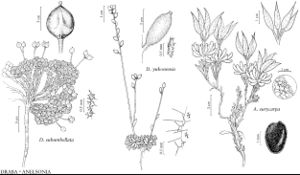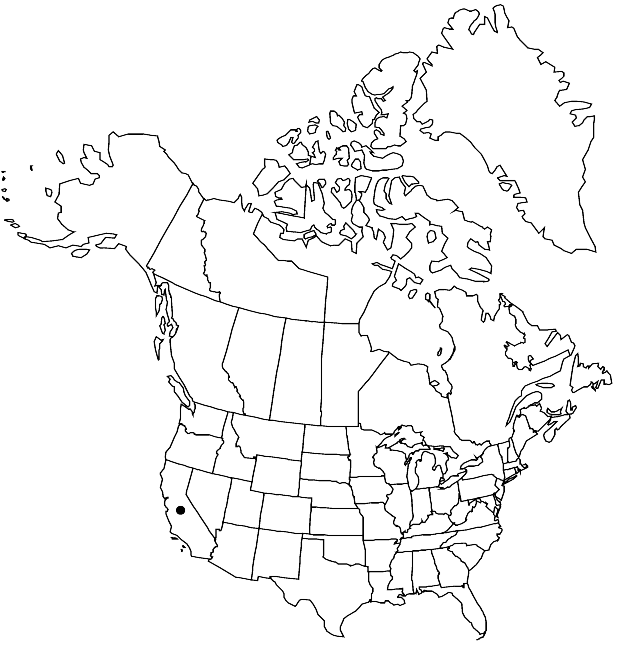Boechera arcuata
Harvard Pap. Bot. 11: 64. 2006.
Perennials; usually long-lived; sexual; caudex often woody (well-developed). Stems usually 1 per caudex branch, arising from center of rosette, elevated on woody base or from ground surface, (2–)3–8 dm, densely pubescent proximally, trichomes short-stalked, 2-rayed and simple, to 1 mm, pubescent distally. Basal leaves: blade linear to oblanceolate, 2–7(–12) mm wide, margins usually entire, rarely denticulate, ciliate along petiole, trichomes to 1.5 mm, surfaces densely pubescent, trichomes usually short-stalked, 2–5-rayed (rarely some simple), 0.4–0.8 mm. Cauline leaves: 10–30(–45), often concealing stem proximally; blade auricles 2–5(–6) mm, surfaces of distalmost leaves pubescent. Racemes 12–50(–70)-flowered, usually unbranched. Fruiting pedicels usually divaricate-ascending, rarely horizontal, gently recurved or straight, 8–22 mm, pubescent, trichomes subappressed, 2–4-rayed. Flowers ascending at anthesis; sepals pubescent; petals purple, 9–14 × 2–4 mm, glabrous or sparsely pubescent (trichomes abaxially); pollen ellipsoid. Fruits usually divaricate-ascending, rarely horizontal, not appressed to rachis, not secund, usually curved, edges parallel, (6–)8–13 cm × 1.5–2.2 mm; valves glabrous or trichomes relatively few, scattered; ovules 90–250 per ovary; style 0.01–0.5 mm. Seeds uniseriate or sub-biseriate, 1.5–1.7 × 1–1.2 mm; wing continuous, 0.1–0.2 mm wide.
Phenology: Flowering Mar–Jun.
Habitat: Rocky hillsides and cliffs in pine forests and chaparral
Elevation: 300-1800 m
Discussion
Although usually treated as a variety of Arabis (Boechera) sparsiflora (e.g., R. C. Rollins 1993), B. arcuata is easily distinguished from that species by having rachises and fruiting pedicels pubescent with subappressed, 2–4-rayed trichomes and a geographic range limited to southern and western California. By contrast, B. sparsiflora has rachises and fruiting pedicels with spreading, usually simple trichomes (sometimes glabrescent) and an allopatric distribution north and east of the Sierra Nevada.
Selected References
None.

